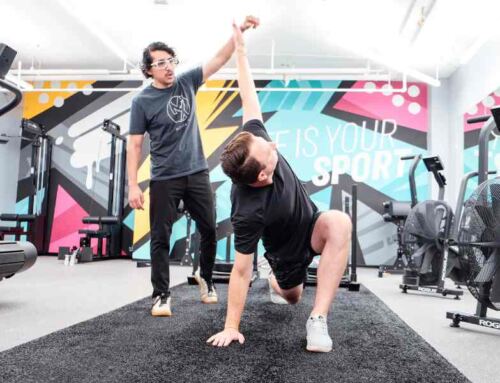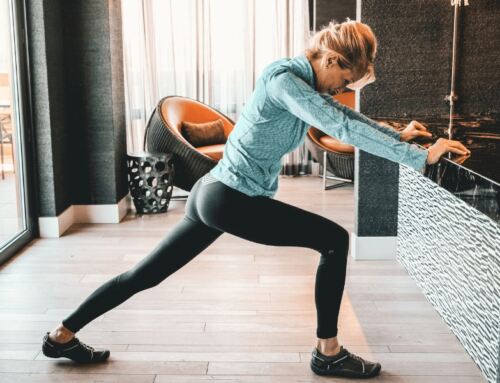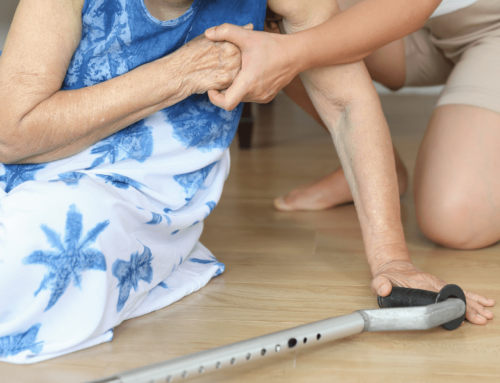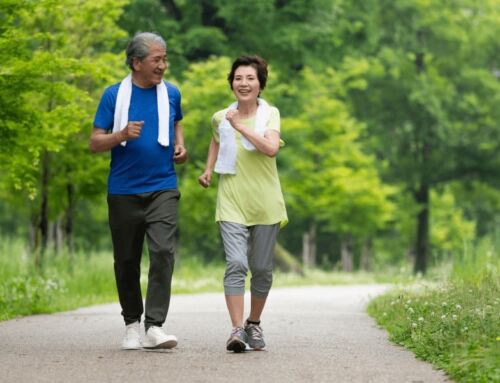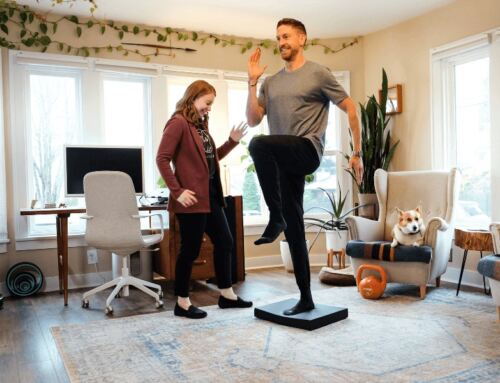How To Walk With Proper Technique, Balance, and Endurance
Walking is a fundamental human movement that relies on complex interactions between the nervous, musculoskeletal, and cardiorespiratory systems.
Due to its function, accessibility, and wide-ranging health benefits, walking is an excellent way for older adults to stay active.
Considering that one in four people over 65 years old fall each year (1) and that up to half of these falls occur while walking (4), it is vital for older individuals to regularly check-in with their walking health.
So, how well are you walking?
This article will share relevant insights and strategies to answer this question and to maintain walking health across the lifespan.
Technique: The Basics of Gait
Because upright walking evolved millions of years ago (3), humans have developed elaborate and efficient systems for ambulation.
Still, there is no “normal” way to walk. “Normal” walking is best viewed as a range of movement strategies that provide mechanical and physiological advantages.
If you’ve seen a physical therapist for lower body pain or injury, chances are that they performed specific walking-related tests or a gait analysis, an in-depth look at the quality of your walking.
Gait requires coordinated movement of muscles and joints in the foot, knee, hip, and spine. Without going into all details (i.e. stride length, step width, step cadence, speed), we can still appreciate the bigger picture.

Generally, walking gait can be divided into two phases – stance phase and swing phase. Using a single leg as a reference point, stance phase refers to when that leg is contacting the ground, and swing phase refers to when the leg is in the air.
- Stance phase requires the leg to absorb shock from the ground, remain stable while the other leg is in the air, and maintain forward progress.
- Swing phase requires the leg to clear the ground and progress forward in anticipation of the next step.
In general, walking should appear smooth and fluid, landing with the heel and progressing forward off the toes. Balance should be maintained throughout, while preserving forward momentum with each step. Feet should clear the ground without catching the toes, and the upper body should rotate naturally and reciprocally, so each arm swings forward with the opposite leg.
Again, there is a wide range of “normal” walking technique, and each person develops their own unique strategy to use across the lifespan. A gait analysis can be helpful to identify specific restrictions or weaknesses.
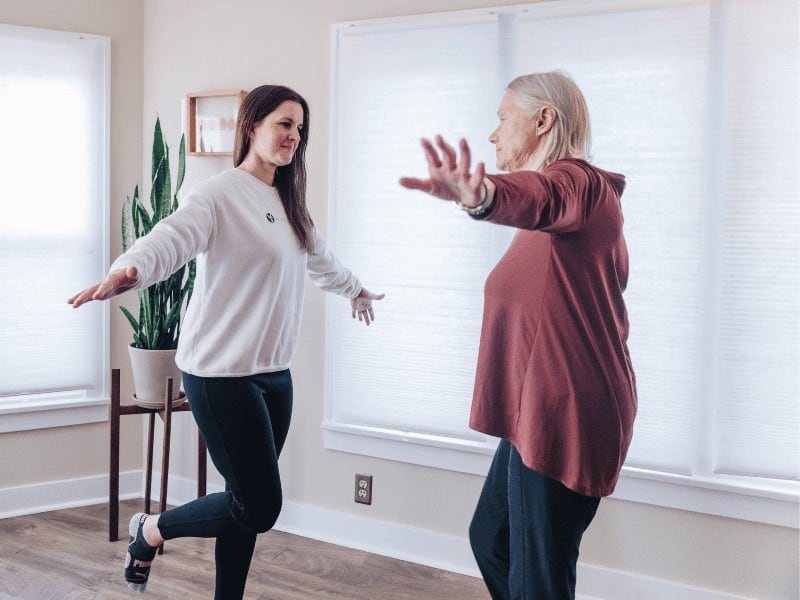
Balance: Staying on Your Feet
Walking-related falls are usually affected by many factors—underlying disease, medication use, home environment, and more.
Specific gait changes may occur with age, including slower speed, wider stance, smaller steps, and decreased arm counterbalance. These, along with other age-related declines in sensory function, joint mobility, or visual acuity, can increase an individual’s risk for falls.
Research shows that physical fitness can protect against walking-related falls (4). Physical therapists will utilize a variety of screening questions and tests to determine if a person is at high risk of falls. If so, they can provide education and specific exercises targeting balance, strength, or coordination.
Properly-fitted mobility aids, such as walkers and canes, may also be useful to restore safe, confident, and efficient walking.
If balance is a concern for you, seek consultation with a physical therapist to determine personalized strategies to keep you on your feet.
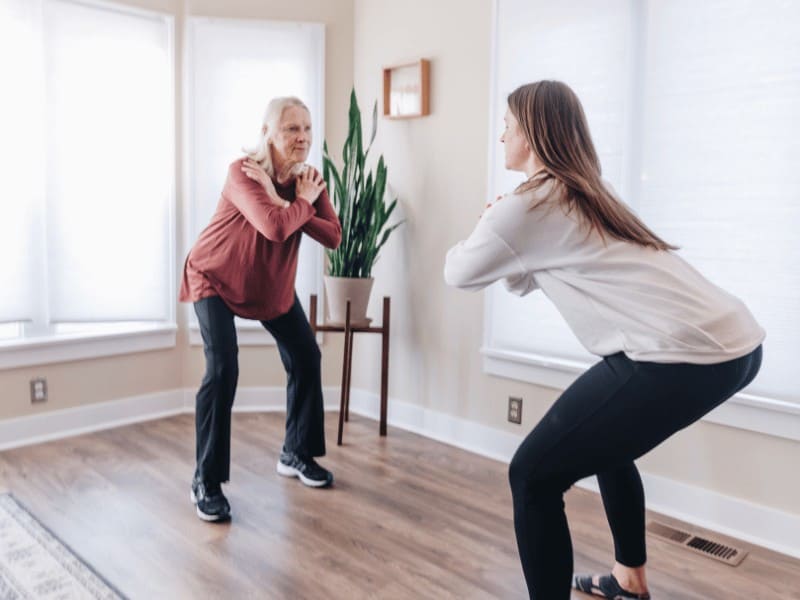
Endurance: Walking as a Lifelong Practice
To keep walking your best long into older age, it is important to commit to daily walking practice, as well as a larger exercise routine. For specific exercise guidelines and parameters for older adults, check out this helpful summary.
Staying consistent with a walking habit can be facilitated by your environment. Find a safe and inviting walking route (i.e. at a park, at the mall, or around the block) and surround yourself with a community of peers and/or coaches that can keep you informed and accountable.
Our online exercise community, AgeProof Your Body, hosts weekly exercise programming, guided walks, and other resources to promote healthy aging. Local Meetup groups or other community programs may provide the stimulus and support needed to get moving and stay moving.
Conclusion
Walking is an excellent predictor of overall health. Each step tells a fascinating story about strength, balance, coordination, and stamina.
If we are walking well, chances are that we are also living well.
Walking promotes independence and carries a multitude of health-related benefits. A consistent walking and exercise practice can slow the rate of age-related changes while promoting healthy aging and longevity.
For more information about healthy aging and getting started with a walking program, check out AgeProof Your Body online or on Instagram and Facebook.
References
- Bergen G, Stevens MR, Burns ER. Falls and Fall Injuries Among Adults Aged ≥65 Years — United States, 2014. MMWR Morb Mortal Wkly Rep 2016;65:993–998. DOI: http://dx.doi.org/10.15585/mmwr.mm6537a2
- Dial L. K. Falls, In: Conditions of Aging. Baltimore: Williams & Wilkins, 1999:119–126.
- Mertz KJ, Lee DC, Sui X, Powell KE, Blair SN. Falls among adults: the association of cardiorespiratory fitness and physical activity with walking-related falls. Am J Prev Med. 2010 Jul;39(1):15-24. doi: 10.1016/j.amepre.2010.03.013. PMID: 20547276; PMCID: PMC2897244.
About AgeProof Your Body
AgeProof Your Body is a specialized online exercise community for anyone 60+ who wants to stay healthy, active, and strong from the safety of home. Designed and lead by the trusted physical therapists at MovementX, this virtual community exists to help you gain strength, improve balance and flexibility, and ensure you can move your best and live your best—regardless of age.



